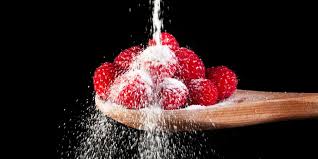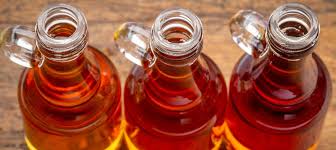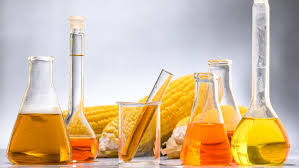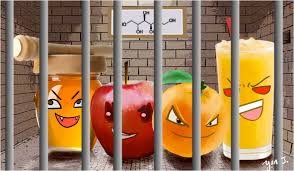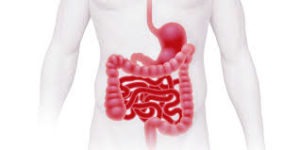Content of the Article
In the ingredient list of packaged foods glucose syrupYou've seen that. “From what plant is glucose syrup obtained?, What is it made of, is it healthy?? ” You may be wondering the answers to your questions.
Aşağıda glucose syrup It tells you what you need to know about.
What is Glucose Syrup?
Glucose syrupIt is a substance used primarily as a sweetener, thickener and humectant in commercial food production. Because it does not crystallize, it is often used to make candy, beer, fondant, and some canned and ready-made baked goods.
This syrup differs from glucose, a simple carbohydrate that is the preferred energy source for the body and brain.
Glucose syrupIt is made by breaking down glucose molecules in starchy foods through hydrolysis. This chemical reaction produces a concentrated sweet product with a high glucose content.
Most EgyptAlthough it is made from, potato, harp, cassava and wheat can also be used. It is produced as a thick liquid or in solid granules.
The dextrose equivalent (DE) of these syrups indicates their level of hydrolysis. Those with higher DE levels contain more sugar and are therefore sweeter.
What Are the Types of Glucose Syrup?
Two fundamental differences in carbohydrate profiles and flavors glucose syrup There are types:
Confectionery glucose
This type of syrup, processed by acid hydrolysis and continuous conversion, typically consists of 19% glucose, 14% maltose, 11% maltotriose and 56% other carbohydrates.
High maltose glucose syrup
Made with an enzyme called amylase, this type contains 50-70% maltose. It is not as sweet as table sugar and is effective in keeping food dry.
Glucose Syrup and Corn Syrup
Many glucose syrup Like corn syrup, it is made by breaking down cornstarch. Corn syrup just right glucose syrup may be called, but all glucose syrups It is not corn syrup - because they can also be obtained from other plant sources.
Nutritionally, the two are similar and have almost no benefits. None of them contain significant amounts of vitamins or minerals. It can be used interchangeably in many recipes, including baked goods, candies, frozen desserts, and jelly.
What are the Harms of Glucose Syrup?
Helps preserve and increase the sweetness of commercial foods glucose syrup production it is very cheap.
However, it doesn't have any health benefits. This syrup contains no fat or protein but instead is a concentrated source of sugar and calories. One tablespoon (15 ml) provides 62 calories and 17 grams of carbohydrates - about 4 times the amount in table sugar.
Using this syrup regularly; It increases the risk of obesity, high blood sugar, poor dental health, high blood pressure, and heart disease.
How to Avoid Glucose Syrup
Regular consumption of this syrup should be avoided as much as possible, as it may harm health. For this, check out the tips below:
Avoid processed foods and drinks
Glucose syrup generally carbonated drinks, It is found in fruit juices and sports drinks, as well as candies, canned fruit, bread, and packaged snack foods. It is healthier to eat natural foods instead.
Check ingredient lists on packaged products
Glucose syrupIt may be listed in the content of products packaged with glucose or other names. While reading the label, high fructose corn syrup Watch out for other unhealthy sweeteners such as.
Take foods that contain healthier sweeteners
Some packaged foods, glucose syrup it uses molasses, stevia, xylitol, yacon syrup or erythritol instead. These sweeteners are not harmful in reasonable amounts.
What is the Difference Between Sucrose, Glucose and Fructose?
Sucrose, glucose, and fructose are three types of sugars that contain the same number of calories per gram.
They are all found naturally in fruits, vegetables, dairy products and grains, but they are also added to many processed foods.
However, they differ in their chemical makeup, the way the body digests and metabolizes them, and their health effects.
Composed of sucrose, glucose and fructose
Sucrose is the scientific name for table sugar. Sugars are classified as either monosaccharides or disaccharides. Disaccharides consist of two monosaccharides linked together and are broken down into the latter during digestion.
Sucrose is a disaccharide composed of one glucose and one fructose molecule or 50% glucose and 50% fructose.
It's a naturally occurring carbohydrate found in many fruits, vegetables, and grains, but it's also added to many processed foods, such as candy, ice cream, breakfast cereals, canned foods, soda, and other sugary drinks.
Table sugar and sucrose found in processed foods are usually derived from sugar cane or sugar beets.
Sucrose is less sweet than fructose but sweeter than glucose.
Glucose
Glucose is a simple sugar or monosaccharide. It is the body's preferred source of carbohydrate-based energy.
Monosaccharides consist of a single sugar unit and therefore cannot be broken down into simpler compounds. They are the building blocks of carbohydrates.
In foods, glucose most commonly binds to another simple sugar, forming either polysaccharide starches or disaccharides such as sucrose and lactose.
It is often added to processed foods in the form of dextrose from cornstarch. It is less sweet than glucose, fructose, and sucrose.
fructose
Fructose or "fruit sugar" is a monosaccharide like glucose.
Naturally fruit, honey, agave and most root vegetables. It is also commonly added to processed foods in the form of high fructose corn syrup.
Fructose is obtained from sugar cane, sugar beet and corn. High fructose corn syrup is made from cornstarch and contains more fructose than glucose compared to regular corn syrup.
Of the three sugars, fructose has the sweetest taste but has the least effect on blood sugar.
They are digested and absorbed differently
The body digests and absorbs monosaccharides and disaccharides differently.
Because monosaccharides are already in their simplest form, they do not need to be broken down before the body can use them. They are absorbed directly into the bloodstream, primarily in the small intestine.
On the other hand, disaccharides such as sucrose must be broken down into simple sugars before they can be absorbed. When sugars are in their simplest form, they are metabolized differently.
Glucose Absorption and Use
Glucose is absorbed into the bloodstream directly through the lining of the small intestine, which then delivers it to the cells.
It raises blood sugar faster than other sugars, which stimulates the release of insulin. Insulin is required for glucose to enter cells.
Once in cells, glucose is either used immediately to create energy or converted to glycogen to be stored in the muscles or liver for later use.
The body tightly controls the blood sugar level. When they are too low, glycogen is broken down into glucose and released into the blood to be used for energy.
If glucose is absent, your liver can produce this type of sugar from other fuel sources.
Fructose Absorption and Use
Like glucose, fructose is absorbed from the small intestine directly into the bloodstream. It raises blood sugar levels more slowly than glucose and does not immediately affect insulin levels.
However, although fructose does not raise blood sugar immediately, it can have longer-term adverse effects. The liver must convert fructose into glucose before the body can use it for energy.
Eating large amounts of fructose on a high-calorie diet can raise blood triglyceride levels. Excessive fructose intake may also increase the risk of metabolic syndrome and nonalcoholic fatty liver disease.
Sucrose Absorption and Use
Because sucrose is a disaccharide, it must be broken down before the body can use it.
Enzymes in our mouth partially break down sucrose into glucose and fructose. However, most of the sugar digestion takes place in the small intestine.
The enzyme sucrase, made by the lining of the small intestine, splits sucrose into glucose and fructose. It is then absorbed into the bloodstream.
The presence of glucose increases the amount of fructose absorbed and also stimulates the release of insulin. This means that more fructose is used to create fat, compared to when this type of sugar is eaten alone.
Therefore, eating fructose and glucose together may be more harmful to health than eating them separately. This explains why added sugars such as high fructose corn syrup are linked to a variety of health problems.
Fructose is worst for health
Our body converts fructose into glucose in the liver to use for energy. Excess fructose puts a strain on the liver that can lead to a host of metabolic problems.
Many studies have shown that high fructose consumption has harmful effects. To these insulin resistance, type 2 diabetes, obesity, fatty liver disease, and metabolic syndrome.
In a 10-week study, people who drank fructose-sweetened beverages had an 8,6% increase in belly fat compared to 4,8% for those who drank glucose-sweetened beverages.
Another study found that all added sugars can increase the risk of type 2 diabetes and obesity, but fructose may be the most harmful.
What's more, fructose has been shown to increase the hunger hormone ghrelin, making you feel less full after eating.
Because fructose is metabolized in the liver like alcohol, some evidence suggests it can be similarly addictive. One study found that it activates the reward pathway in the brain, which can lead to increased sugar cravings.
As a result;
Glucose syrupis a liquid sweetener often used in commercial foods to increase taste and shelf life.
However, eating this syrup regularly is unhealthy because it is highly processed, contains a lot of calories and sugar. Instead, choose foods with healthier sweeteners.







